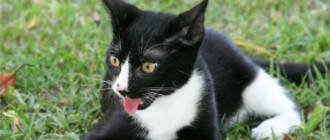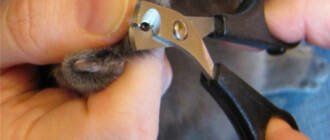One of the best ways to find out how old a cat is is by its teeth. This method is somewhat complicated, but quite accurate.
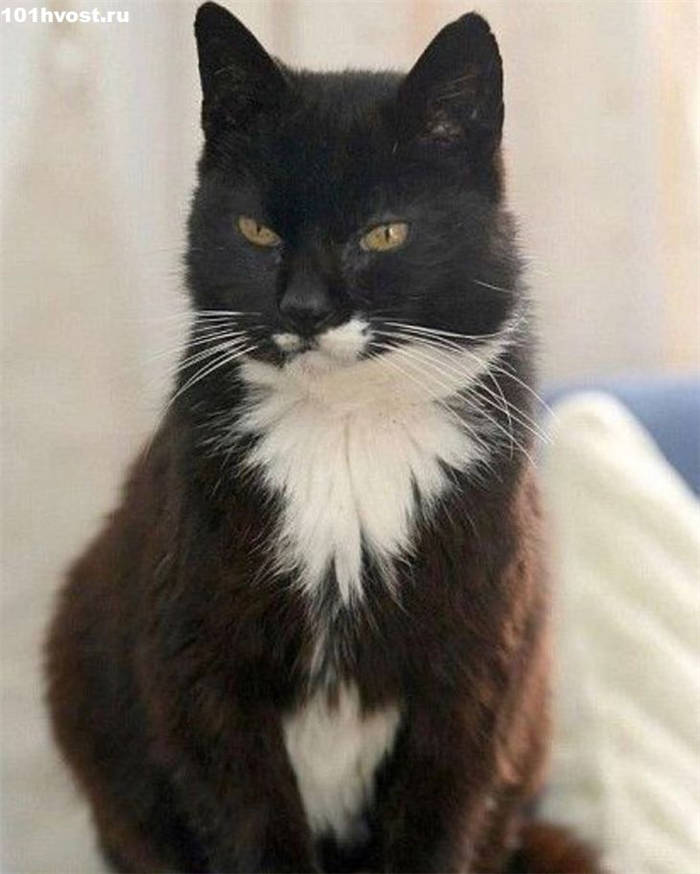
- How to determine the age of a cat?
- Dental System
- How old is a cat by human standards? Let's try to measure
- How to really count
- Puberty.
- Weight
- Adult cats – 7 to 10 years old
- Musculoskeletal definition
- Characteristic behavior at different ages
- By body processes
- How do you know how old a cat is if she came into the house as an adult. 5 important criteria that will help to find out the approximate age😺
- Long-lived cat breeds
- How to tell the age of a cat
- Examine a cat's teeth
How to determine the age of a cat?
It turns out that in this case you can get, albeit an approximate answer to the question. For this purpose, an external examination of the pet is done – as it grows older, and then ages the condition of the coat, skin, eyes, teeth deteriorates – and behavioral factors are evaluated. By analyzing the data obtained, you can get an idea of the age of the pet.
Of course, this sign is indirect, and getting close to the real figure with its help is problematic. Much will depend on the temperament of the pet and its state of health at the moment.
For example, many people know that young pets are much more active than their older counterparts. After three months of life, kittens can jump, somersault, run around all day long, annoying the household in every way with their noisy games.
As the cat gets older, its motor activity decreases. And by one year of age a cat will not play as often and as boisterously as in infancy. It prefers to quietly and calmly watch what is happening, lounging imposingly on the couch or window sill.
Cats in their old age sleep most of the time and don't move much, which could be due to arthritis, poor eyesight, senile laziness or more serious health problems.
Again, the pet's character and health status should be considered. If the pet is not feeling well, it will prefer peace and quiet at any age.
You can also estimate the approximate age by the onset of puberty. It is known that the first heat in most cats begins at 7-9 months, with rare exceptions, the female comes to her first hunt by six months. At about the same age, males first feel attraction to the opposite sex and start marking territory.
Dental System
Dental assessment is probably one of the most accurate methods of determining a pet's age.
Baby teeth are the first to emerge (3-4 weeks), followed by canines and premolars (1.5 months), and by the age of four months molars are erupted. Soon the replacement of milk teeth by permanent ones begins.
At 6-7 months, the cat has the whole set of teeth, which are necessary for adult cats. The teeth are white in color, strong, extremely sharp with no signs of abrasion.
After one year, the dental system begins a slow but sure regression (there are 30 teeth in total: 4 canines, 4 molars, 10 premolars, 12 incisors). At first, they yellow, gradually wear out and begin to fall out. It is by color, abrasion and loss that one judges the approximate age of an animal:
- 2 years old the yellowing will be barely noticeable, the middle incisors of the lower jaw are erased.
- 3-5 years, the yellowing is more pronounced, wear on the incisors of the upper jaw is visible, signs of abrasion on the canines are visible.
- 5-10 years of age, there is significant yellowing, abrasion of the outermost lower and upper incisors; teeth may begin to fall out, with the incisors being the first to lose.
- At an older age, the remaining teeth will be completely yellow. If the canines are missing, it can be assumed that the cat is over the age of fifteen years.
When evaluating the dental system, do not forget to pay attention to the bite, the condition of the mouth itself. Poor feeding, violation of the rules of dental care leads to premature yellowing, abrasion, in addition, overbite or underbite also affects the appearance and health of the teeth.
How old is a cat by human standards? Let's try to measure
It is said that a cat has nine lives. But our pets live much less than a human, who has only one life. Many cat owners wonder how old their cat is by human standards. And what if he is already celebrating his 50th birthday? And isn't it time to call him Barsik Kuzmich with respect?

How to "calculate" the age of the cat? Is it older or younger than you by human standards? After all, many things change with age, including physical activity and diet.
How to really count
In fact, the "seven-year rule" doesn't really adequately calculate your pet's age. Under natural conditions, cats had to mature very quickly in order to have time to give birth and have the strength and ability to care for, feed and protect them. Therefore, in the first years of life, cats "age" much faster than humans. So, in its first year of life alone, a cat becomes 15 years older, and its age is equivalent to the age of a human teenager. We count the age to one year: at four months a cat is 5 human years, at 8 months it is 10 years, at 12 months it is 15 years. In the second year, the cat becomes 9 years older. In total, by its two-year birthday a cat reaches the human age of 24.
And further on in the cat's calendar each year already goes for 4 human years. That is, at the age of 3 the cat is 28 years, at 6 years – 40, 8,5 years – 50, and at 21 years – 100. If he lives to see it, pardon the prose of life.
Puberty.
Teeth have been dealt with. Now let's try to deal with what, pardon me, is under the tail. This question is all very relative, but it is believed that males usually reach maturity by 6 months of age. At this time, they begin to mark territory with a secretion of acrid and persistent odor – this can not be confused with anything else.
Puberty in females is marked by the first heat (estrus), which occurs at about 5-9 months. During this period, cats make loud calls trying to attract the male. However, the first estral cycles can pass, as they say, idle, since cats are most fertile at the age of 18 months to 8 years.
Weight
If you're talking about a kitten, you can roughly determine its age by its weight. It is believed that kittens gain about 400-500 grams each month. This means that at the age of three months, the kitten should weigh about 1.5 kilograms, and by four months – already about two. True, this method can hardly be called reliable. If the animal is unhealthy or hungry, its weight will certainly not match its age.
By one year most cats reach their full size. Only some breeds, such as the Maine Coon, continue to gain weight until age 4.
You can tell if a cat is young or old by looking at its muscle tone. As cats age, the muscle volume in the croup and shoulder blades decreases, and the skin sags.
Adult cats – 7 to 10 years old
Cats at the age of seven or eight are already called old by most veterinarians, although by human standards they are still middle-aged. From this point on it is important to watch your cat's nutrition particularly carefully, since cats have a slower metabolism and are at risk of gaining weight quickly. Also, make sure that the cat has no dental problems, that his kidneys and heart are healthy, and that there is no shortness of breath or joint pain.
Now that the cat is 11 years old, it can already be compared to an older person. At this age, the animal may be recommended a diet of special food. Some cats become more irritable with age. This is often due to pain or discomfort in the joints, cognitive changes in brain function and even confusion. If you notice such changes in your pet's behavior, be sure to tell your veterinarian.
Musculoskeletal definition
In mature specimens, the musculature is developed according to the skeleton. After puberty, the cat acquires the characteristic features of its breed. Also the musculoskeletal apparatus of adult pets has some similar features. This is a pronounced relief of the muscles, ease of movement, increased activity, endurance. Sometimes also highlight the gracefulness of cats.
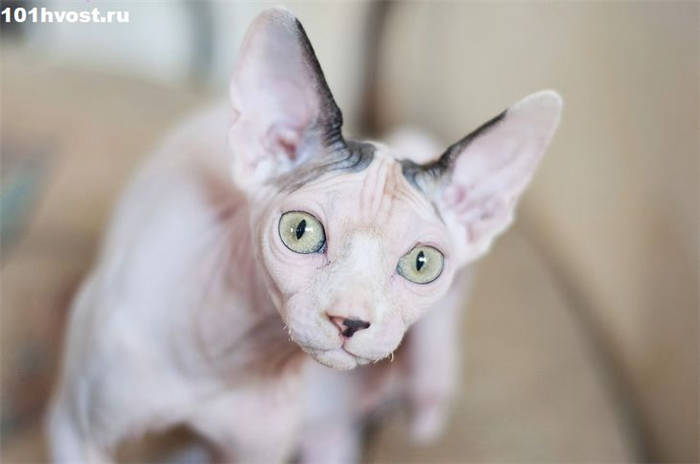
But after 8 years of life, the first signs of aging begin to appear. This is most noticeable in short-haired breeds. For example, the sunken backbone, prominent shoulder blades, lack of ease of movement, thinness due to reduced muscle tissue – all this indicates the aging of the cat.
Characteristic behavior at different ages
Kittens and young cats are very playful and lively, it seems that they never get tired. They love to explore everything. Although this is also characteristic of many adults. Adults, on the other hand, prefer to lead quiet, measured lives filled with sleep and food. It is clear that this does not generalize everyone.
Caring, calm, friendly to people mother cat – the key to the timely development and good character of the kitten. She teaches him and punishes him if he gets playful. Kittens who are fed artificially from a pacifier have less control over their behavior and may hurt the owner or other animals. He has more developed hunting instincts.
But if you scare the kitten, not properly brought up, then later he may grow nervous, aggressive, defensive, attacking and biting. My cat is one of those. As a child, she was very much frightened by her grandfather with a crutch, and now she shows aggression at the slightest wrong move. But she's not a super vicious monster, because very often she comes to sleep under her side and purrs like a running tractor if she's stroked properly.
By the way, 2-6 month old kittens can imitate not only their mother and other cats, but also dogs if they live in the same house. Sometimes they even learn some commands.
The character of pets is also affected by genetic predisposition. But not only that, but the conditions in which the pregnancy of the mother cat, and after and how the baby spent the first months of life.
According to the innate disposition of "little lions" are divided into shy, aggressive and sociable. These basic characteristics can be strengthened or weakened only to some extent. More often than not, this is the background overlaid by feline life experiences.
By body processes
Perhaps determining age by internal body processes is the most accurate way. It's easy to tell how old your pet is by this clock.
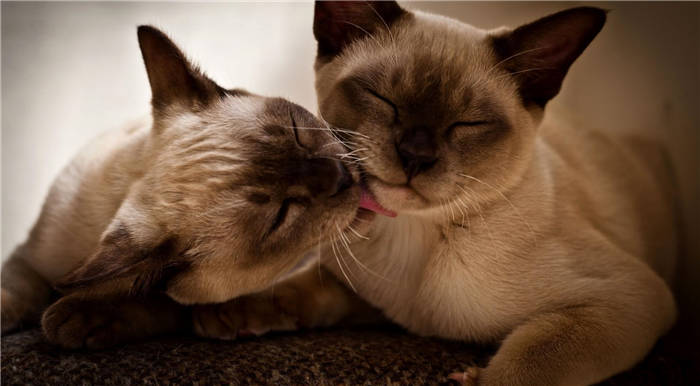
Puberty begins at 7-9 months (sometimes earlier, by 6 months) in kittens, and somewhat later in boys, by 9-11 months. A small difference may occur due to the climate, breed, and weight of the pet.
Determining your pet's age is incredibly important. This is the only way to make the right diet, daily routine, and amount of vitamins needed.
How do you know how old a cat is if she came into the house as an adult. 5 important criteria that will help to find out the approximate age😺
If a cat comes into the house already quite mature, it can be difficult to determine its age.
The new owners can learn its approximate age by examining certain features in the appearance and behavior of the animal.
Only a veterinarian can give you a more accurate answer, but in its absence, you can try to do it yourself.
There are several signs indicating the age of the cat:
✔Milk teeth usually appear in the first 2-4 weeks after birth. There are 26 of them.
At about 3 to 4 months to six months of age, they are replaced by permanent teeth.
✔ Sometimes an adult emaciated cat can be mistaken for a large teenage kitten. And vice versa. That is why it is always a good idea to look inside the cat's mouth. Teenage and adult cats already have 30 teeth, which vary in size and shape.
✔ Age-related signs also include yellowing of the teeth. Up to the age of 2, a cat's teeth are usually white, but a slight yellowing may occur.
Between the age of 3 and 5 years, the yellowing becomes more noticeable.
By the age of 10, yellowing becomes very easy to notice – it is likely to be on almost all teeth.
✔ Dark spots on the teeth indicate that the animal is probably more than 10 years old.
✔ A solid age is also indirectly indicated by the overall condition of the teeth, such as the formation of stones, broken canines, cracks and other things.
2. Eyes.
✔ As a cat ages, its eyes gradually become dimmer. The brighter the animal's eyes, the younger it is.
✔ Pigment spots on the eyelids and iris, lacrimation, mucus formation at the inner corner of the eyes and other secretions are more frequent and more noticeable the older the cat is.
✔ Adults often develop cataracts, so the pupils may be covered with a film.
3. Puberty.
✔ A cat usually reaches maturity at 6 months of age. At this age, he begins to mark his territory and emit a distinctive pungent smell.
Long-lived cat breeds

For some people, the longevity of their pet is very important. They want to enjoy the neighborhood with their four-legged friend for as long as possible. Such people should pay attention to breeds of cats that are known for their longevity. Other things being equal, these cats and cats live much longer than their brethren:
The answer to the question, "How long do cats live?" – is very individual and must be considered on a case-by-case basis. But no matter how long the life of a pet, the task of the owners to make his life comfortable, surround his four-legged friend with care and human love.
How to tell the age of a cat
Contributor(s): Pippa Elliott, MRCVS. Dr. Elliott, BVMS, MRCVS is a veterinarian with over 30 years of experience in veterinary surgery and treating companion animals. She graduated from the University of Glasgow in 1987 with a degree in veterinary medicine and surgery. She has worked in the same animal clinic in her hometown for over 20 years.
If you don't know your cat's exact date of birth from the beginning, it can be difficult to determine his age. However, by certain signs you can determine the approximate age of the animal. The age of the cat gradually affects the condition of its teeth, coat, eyes and its behavior. Although your veterinarian can tell you the most accurate age of your cat, you can also look for some signs on your own to get an idea of your cat's possible age.
Examine a cat's teeth
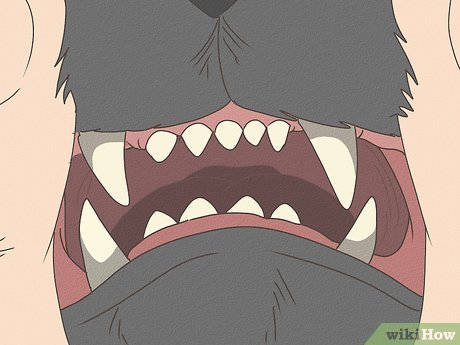
- Kittens first develop incisors (at about 2-4 weeks) and canines (at about 3-4 weeks), followed by premolars (at about 4-6 weeks).
- Kittens younger than 4 months will not yet have molars.
- From the age of 6 months up to one year, a cat will have all of its adult teeth. At this stage of development, the cat's teeth are white without any signs of wear.
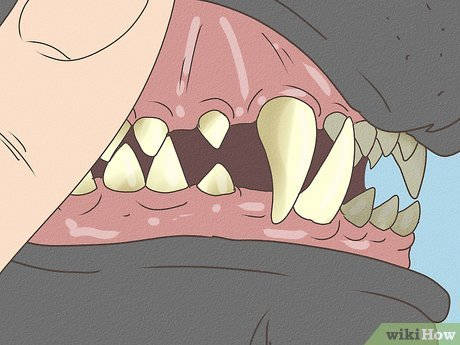
- At about 2 years of age, a slight yellowing of the teeth may appear.
- Between the ages of 3 and 5 years, the yellowing of the cat's teeth is more noticeable.
- Between the ages of 5 and 10, the yellowing of the teeth is clearly visible.
- At the age of 10 years and older, the yellowing of the teeth is quite severe and gradually appears on all teeth.
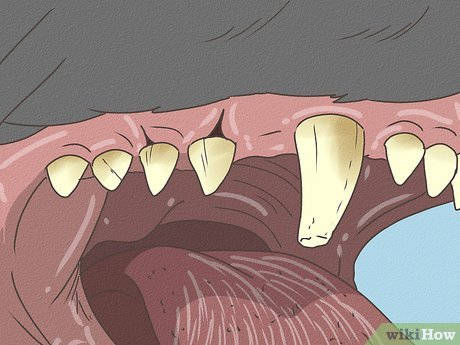
- Worn teeth do not have sharp tips and appear blunter than a young cat's teeth.
- Some tooth tips may be completely erased or even broken off.
- Typically, signs of tooth wear in cats appear around the age of 5 years.
- Between the ages of 5 and 10, the teeth show clear signs of wear and tear.
- At the age of 10 years and older, heavy wear and tear on the teeth becomes evident. Some teeth may also be missing at this age.
- The older a cat is, the more likely he is to have tartar and recession (drooping) of the gums. This is not a very accurate way of telling how old the cat is, since the rate of tartar formation is greatly influenced by the cat's diet.



